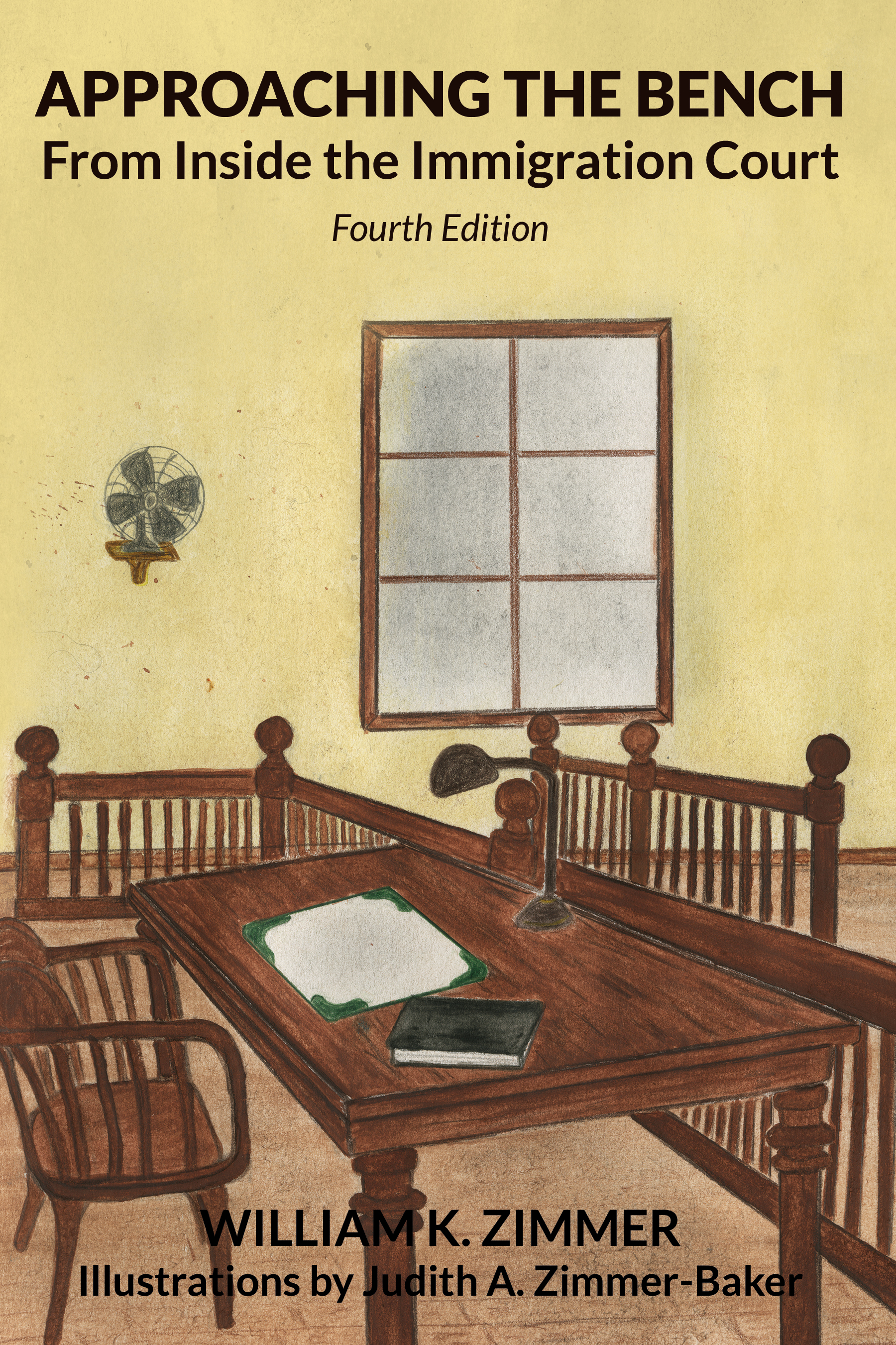The BIA Must Consider All Objective Evidence Before Denying a CAT Claim

The procedural history, facts of record, holding and rationale in Elmond Echaukian Ndifon v. Garland (October 4, 2022) No. 20-60997 are as follows:
Case History
The Petitioner applied for asylum, withholding of removal, and protection under CAT before an Immigration Judge.
The Immigration Judge denied all of the Petitioner’s relief applications.
The Petitioner appealed the denial of his relief applications to the Board of Immigration Appeals (“BIA”).
The BIA affirmed the denial of the Petitioner’s relief applications by the Immigration Judge.
The Petitioner then filed a petition for review of the BIA’s decision.
Facts
- The Petitioner is a native and citizen of Cameroon, who entered the United States as an arriving alien on October 29, 2017.
- On November 18, 2019, the Department of Homeland Security (“DHS”) served the Petitioner with a Notice to Appear, charging that he was subject to removal from the United States.
- On December 18, 2019, the Petitioner admitted he was subject to removal from the United States and applied for asylum under section 208 of the Immigration and Nationality Act, as amended (“the Act”), withholding of removal under section 241(b)(3) of the Act, and protection under the Convention Against Torture (“CAT”).
- According to the Petitioner’s testimony, he is an Anglophone Cameroonian (i.e., a Cameroon citizen who speaks English) and a member of the Southern Cameroon National Council, an organization that advocates for the independence of Southern Cameroon.
- Consequently, the Petitioner believes he was persecuted in Cameroon and he departed from Cameroon because he feared persecution and torture by the Cameroon military.
- The Immigration Judge found the Petitioner’s testimony inconsistent and implausible, made an adverse credibility finding, and denied his asylum and withholding of removal claims.
- With regard to the Petitioner’s CAT claim, the Immigration Judge found that the Petitioner had failed to establish past torture.
- The Immigration Judge then specifically addressed the country conditions articles and reports provided by the Petitioner that detailed mistreatment of Anglophones in Cameroon, as well as DHS evidence suggesting the Cameroon government is taking steps to resolve the Anglophone conflict.
- Ultimately, the Immigration Judge determined that the Petitioner had failed to establish by clear and convincing evidence that the government of Cameroon would more likely than not torture him upon his return to Cameroon or that he would suffer torture with the consent or acquiescence of Cameroonian officials.
- The BIA determined the Immigration Judge’s adverse credibility findings were not clearly erroneous and affirmed the denial of asylum and withholding of removal.
- With regard to the Petitioner’s CAT claim, the BIA “uph[e]ld the denial of the respondent’s request for protection under [CAT] . . . because the respondent’s claim . . . is based on the same testimony the [IJ] found not credible, and the respondent points to no other objective evidence to support his claim.”
- The Petitioner then filed a petition for review.
Held
Petition for review GRANTED
Rationale
The Petitioner did not contest the BIA’s adverse credibility findings or its denial of asylum and withholding of removal.
However, the Petitioner requested the Fifth Circuit Court of Appeal to vacate the BIA’s decision and remand the record of proceedings back to the BIA because the BIA had failed to consider the country conditions evidence with respect to his CAT claim.
In particular, the Petitioner specifically objected to the BIA’s statement that his CAT claim “is based on the same testimony the [IJ] found not credible, and [Ndifon] points to no other objective evidence to support his claim.”
According to the Petitioner, this statement shows the BIA erred by failing to consider the country conditions evidence altogether.
The Fifth Circuit Court of Appeal reasoned as follows:
- According to precedential fifth circuit case law, CAT claims are “distinct from asylum and withholding-of-removal claims and should receive separate analytical attention.” Santos-Alvarado v. Barr, 967 F.3d 428, at 436 (5th Cir. 2020); see also Efe v. Ashcroft, 293 F.3d 899, at 907 (5th Cir. 2002) (discussing favorably Seventh and Ninth Circuit Opinions cautioning against “overreliance on an adverse credibility ruling” in the CAT context).
- The regulation governing CAT claims “requires the BIA to consider ‘[e]vidence of gross, flagrant or mass violations of human rights within the country of removal’ and any ‘[o]ther relevant information regarding conditions in the country of removal’ in its likelihood-of-torture assessment.” Arulnanthy v. Garland, 17 F.4th 586, at 598 (5th Cir. 2021). See 8 C.F.R. § 1208.16(c)(3).
- The regulation contains “no exception for cases of adverse credibility determinations.” Arulnanthy v. Garland, at 598.
- Therefore, when an applicant “offer[s] non-testimonial evidence that could independently establish his entitlement to CAT relief,” an adverse credibility finding alone cannot defeat an applicant’s eligibility for relief. Arulnanthy v. Garland, at 598.
- In the light of two unpublished cases deemed instructive, the BIA’s statement “raises too great a concern that the BIA did not adequately consider the evidence before it.” Emmanuel-Tata, 2022 WL 126982, at *3. See, also, Melendez-Monge v. Garland, 2022 WL 1532641 (May 16, 2022) No. 20-60814.
- Furthermore, the fact that the Immigration Judge considered country conditions evidence does not cure the BIA’s error.
- The BIA incorrectly found no record evidence about relevant country conditions. Consequently, the Petitioner did not receive “meaningful consideration of the relevant substantial evidence supporting” his claims. Abdel-Masieh v. INS, 73 F.3d 579, at 585 (5th Cir. 1996).
- Therefore, the BIA decision must be reversed.
Commentary
In Elmond Echaukian Ndifon v. Garland (October 4, 2022) No. 20-60997, the Fifth Circuit Court of Appeal relied on multiple unpublished decisions for guidance.
Regardless of consideration by the Immigration Judge of all the objective appropriate country condition evidence relating to a CAT claim, the BIA must indicate clearly in its decision that it has considered all the objective evidence available in the record of proceedings relating to a CAT claim, despite the discard of subjective evidence, such as testimony, based on an adverse credibility finding.
It seems reasonable to conclude that the distinction between the mandatory nature of CAT protection and relief from removal, such as asylum under section 208 of the Act which shares certain subjective elements with withholding of removal under section 241(b)(3) of the Act, at least in part, justifies insistence on consideration of all relevant objective evidence in the record of proceedings by the BIA.
Withholding of removal under the CAT is mandatory; not discretionary. The applicant is entitled to relief upon establishing eligibility. See 8 C.F.R. § 1208.16(c)(4).
The United States signed the United Nations Convention Against Torture and other Forms of Cruel, Inhuman or Degrading Treatment or Punishment (“CAT”) treaty on October 18, 1988.
The United States Senate ratified the treaty on October 27, 1990, and the CAT became binding on the United States on November 20, 1994. See 136 Cong. Rec. S17,486, S17,492 (daily ed. Oct. 27, 1990) and 74 Interpreter Releases, No. 45, Nov. 21, 1997, at 1773, 1781 (citing U.N. Doc. No. 571 Leg/SER. E/13, IV.9 (1992)).
The CAT was not implemented until enactment of section 2242 of the Foreign Affairs Reform and Restructuring Act of 1998 (Pub. Law 105-277, Div. G, Oct. 21, 1998) which required implementation no later than 120 days after enactment (March 22, 1999).
Before implementation, Immigration Judges lacked jurisdiction to adjudicate CAT claims. Matter of H-M-V-, 21 I&N Dec. 3365 (BIA 1998).
An applicant for relief under Article 3 of the CAT must apply for withholding of removal under 8 C.F.R. § 1208.16(c) (not to be confused with withholding of removal under section 241(b)(3) of the Act).
To qualify for relief under the CAT, an applicant must prove that torture would be “more likely than not” for the applicant if he or she is removed to the proposed country of removal. See 8 C.F.R. § 1208.16(c)(2).
Unlike asylum applicants and withholding of removal applicants under sections 208 and 241(b)(3) of the Act, an applicant for withholding of removal under the CAT is not required to establish refugee status by proving persecution arising from race, religion, nationality, membership in a particular social group, or political opinion, or a subjective fear of punishment or harm.
The independent criteria that govern CAT applications which do not include proof of a subjective fear means that objective evidence could conclusively mandate the grant of CAT protection, inspite of subjective evidence and testimony deemed incredible, implausible or even contrived by an Immigration Judge or the BIA.

